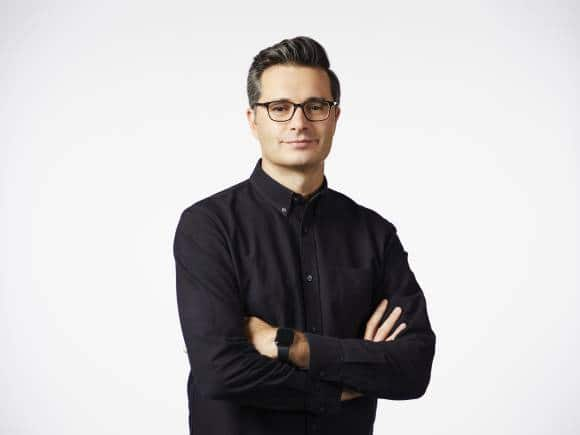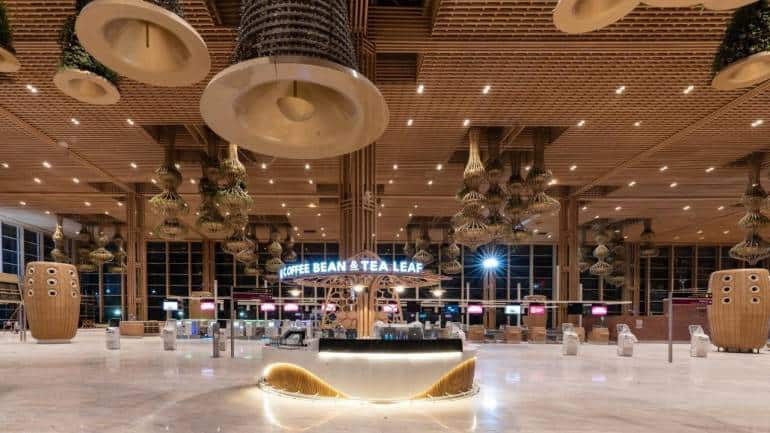



Terminal 2 of Bengaluru’s Kempegowda International Airport opened on November 11, 2022. Nicknamed Terminal in a Garden, the terminal was designed by American firm Skidmore, Owings & Merrill (SOM) and built at a cost of about Rs 5,000 crore.
SOM, which was started in 1936 when two architects and an engineer formed a partnership, has been involved in the making of several iconic buildings such as the Lever House in New York City (1952), Sean Towers and John Hancock Towers in Chicago and the engineering of Bhurj Khalifa – the world’s tallest building.
SOM has also developed bespoke solutions for the airports at Dublin, Toronto, San Francisco, Mumbai (Chattrapati Shivaji International Airport Terminal 2), and most recently, Terminal 2 in Bengaluru’s Kempegowda International Airport.
 Peter Lefkovits
Peter LefkovitsIn the week after Thanksgiving, SOM's Design Principal Peter Lefkovits spoke to us about the design approach that went into the Bengaluru airport project. Edited excerpts:
What was the design approach to Terminal 2 of the Kempegowda International Airport?We worked very closely with our client, BIAL, and its stakeholders to develop a design that would support the continued growth of air travel at Kempegowda International Airport, provide a highly flexible and functional plan to support its operations, be a model for sustainable development and also stay on budget, and create a unique and memorable passenger experience.
The design of the terminal is both highly functional and extremely memorable for passengers. We created an immersive experience that connects with nature from start to finish—one that is soothing to the senses and focuses on making travel not only efficient, but also humane.
Throughout the complex, interior plantings, exterior gardens, and rich natural materials weave the experience of nature into travellers’ journeys. All these elements come together to create a calming oasis within a bustling, international airport. And the careful planning we did for the terminal provides a flexible framework for the operations of the terminal today and into the future.
What have the challenges been in the designing and making of the terminal?There were many, but one of the key challenges that comes to mind is this—as part of the overall sustainability goals of the project, we designed a landscape experience that would not place additional stress on the existing water supply. This required a high level of collaboration between the architects, engineers, landscape architects, horticulturists, and lighting designers to develop solutions that would allow the planting to thrive in an indoor, airport environment and throughout the outdoor forest belt. This approach required us to look beyond the terminal, to the broader site, to develop collection ponds where rainwater can be retained and then recycled to irrigate all the plants in the terminal.
The terminal is the largest airport building in the world to have been pre-certified as a LEED Platinum building. This was one of our goals from the outset, and the fact that we achieved it is a testament to the collaborative and integrated design and engineering of the terminal as well as BIAL’s commitment to sustainable development.
From a programming standpoint, passengers have all the benefits of a modern, world-class airport. At check-in, they can select from the convenience of the latest digital processing or the personalized service of an airline. Extensive retail areas bring a mix of international and local retail brands, with other entertainment venues and lounges to support a variety of user needs. The gate lounges provide a tranquil setting prior to boarding, where you can finish some work or enjoy the views to the foothills beyond. Filled with natural daylight, these areas are spacious and welcoming. High-quality, natural finishes create a hospitable environment. Inside and outside, passengers will be able to explore extensive gardens that showcase plant species from around the world.
 SOM collaborated with designers Sandeep Khosla and Abu Jani for the interiors. (Image: ANI)How many teams were involved, just to give an idea of the scope of work?
SOM collaborated with designers Sandeep Khosla and Abu Jani for the interiors. (Image: ANI)How many teams were involved, just to give an idea of the scope of work?From a design standpoint, we are fortunate to have collaborated with an incredible group of designers, planners, landscape architects and engineers from around the world.
We worked closely with Grant Associates from the UK—they were pivotal in developing the unique landscape program—and we worked closely with BPI, our lighting designers, to analyze the performance of the daylighting of the terminal.
SOM’s structural engineers developed a highly efficient structural system that allowed BIAL to build the terminal quickly and efficiently, with the ability to adapt to different interior configurations as air travel changes in the future.
We collaborated with Indian designers Sandeep Khosla and Abu Jani when it came to the development of the interiors. Together, our collective approach was to develop a contemporary design that celebrated the rich and diverse history of Karnataka.
What were the challenges faced in building T2 that have been unique to the city of Bengaluru?Spurred by growth in the tech sector, Bengaluru is a rapidly growing city with a rich and dynamic culture. Like many cities facing rapid urbanization, Bengaluru has to think seriously about sustainability in order to ensure its future. So, it was imperative that the design of the terminal be a model for sustainable development.
As a civic building, the terminal also presented an opportunity to create a destination within Bengaluru—a place where the public can reconnect with nature and experience spaces that are free from vehicular traffic. The transit hub that we designed for the landside will play a major role in that as well—as an outdoor retail and entertainment area connected to a metro station. From the start, we worked to create a welcoming place for families and commerce, and also a catalyst for responsible urban development in Bengaluru.
What features have been designed keeping the Bangalore identity in mind?From the outset, the team focused on delivering a project that would resonate with the city of Bengaluru, and we set a goal to make it largely “built in India.” Whether it was the structural design or the selection of materials, we first looked to regional sources and fabricators as much as possible. We are proud to say that the majority of the terminal was made in India. We worked closely with local fabricators and suppliers of many of the materials passengers will see in the terminal, such as the brick and stone. These materials, and their sourcing, not only bring a richness to the passenger experience, but also support the terminal’s ethos towards sustainability.
Beyond the systems and finishes, we collaborated with the BIAL team and Indian designers, Abu and Sandeep, to identify opportunities for infusing the terminal with art and design reflective of Karnataka. Throughout the terminal, passengers will directly engage with art and custom installations woven throughout the garden experiences, bringing a layered and rich experience for passengers. And of course, the larger design vision of creating a “terminal in a garden” draws on the beautiful landscapes distinct to Karnataka.
Discover the latest Business News, Sensex, and Nifty updates. Obtain Personal Finance insights, tax queries, and expert opinions on Moneycontrol or download the Moneycontrol App to stay updated!
Find the best of Al News in one place, specially curated for you every weekend.
Stay on top of the latest tech trends and biggest startup news.